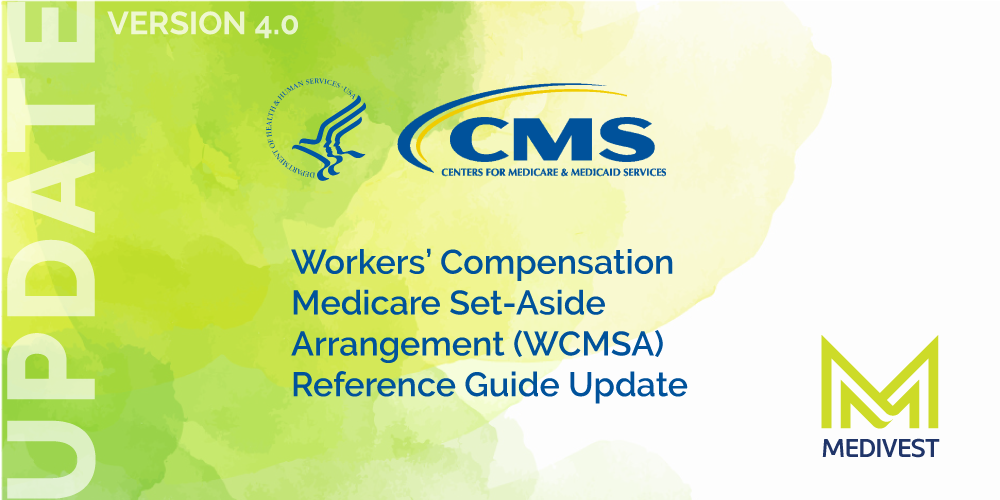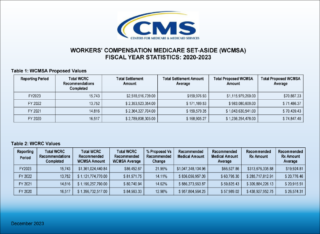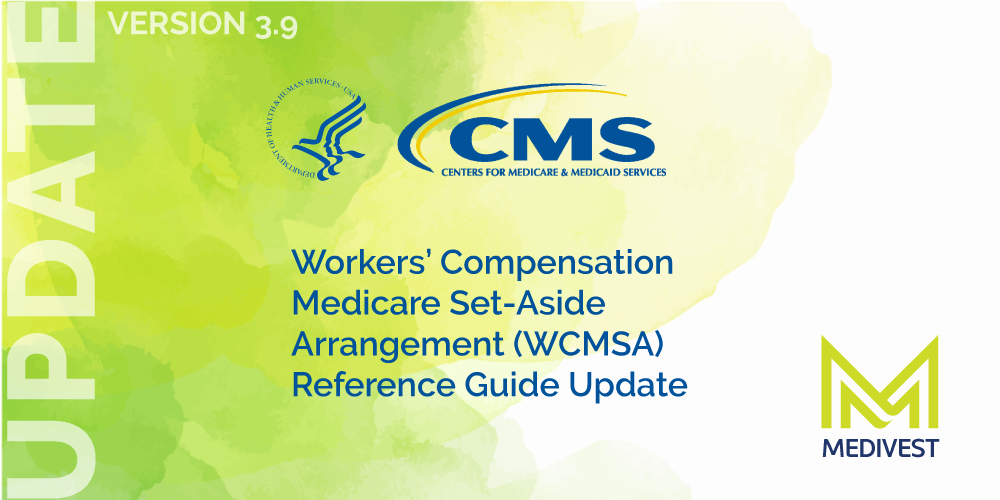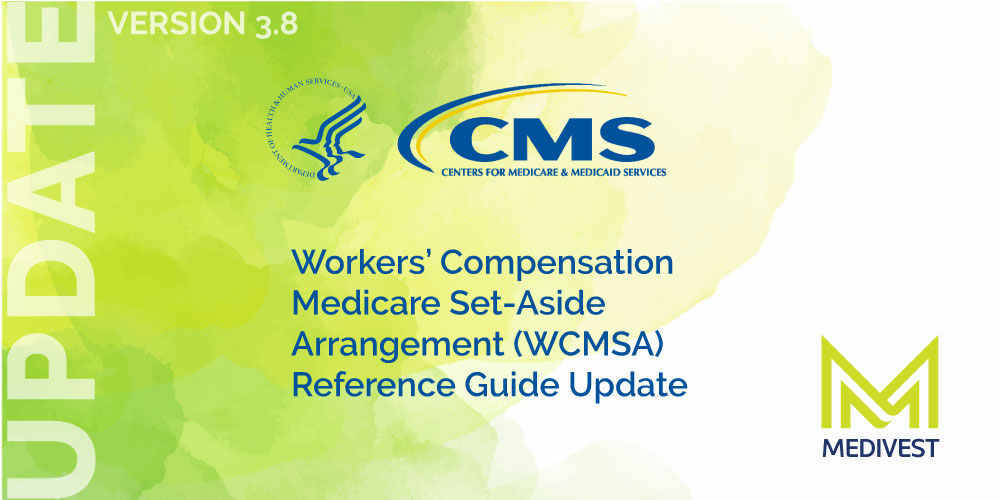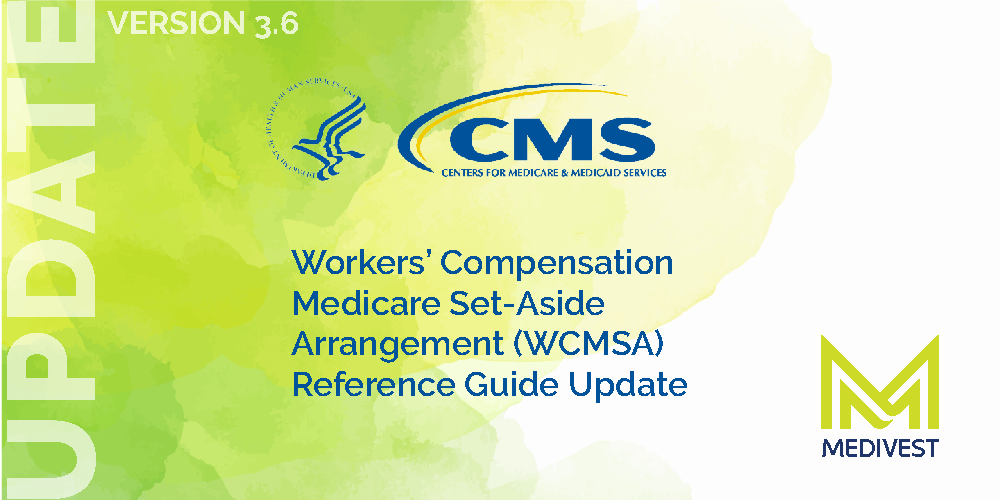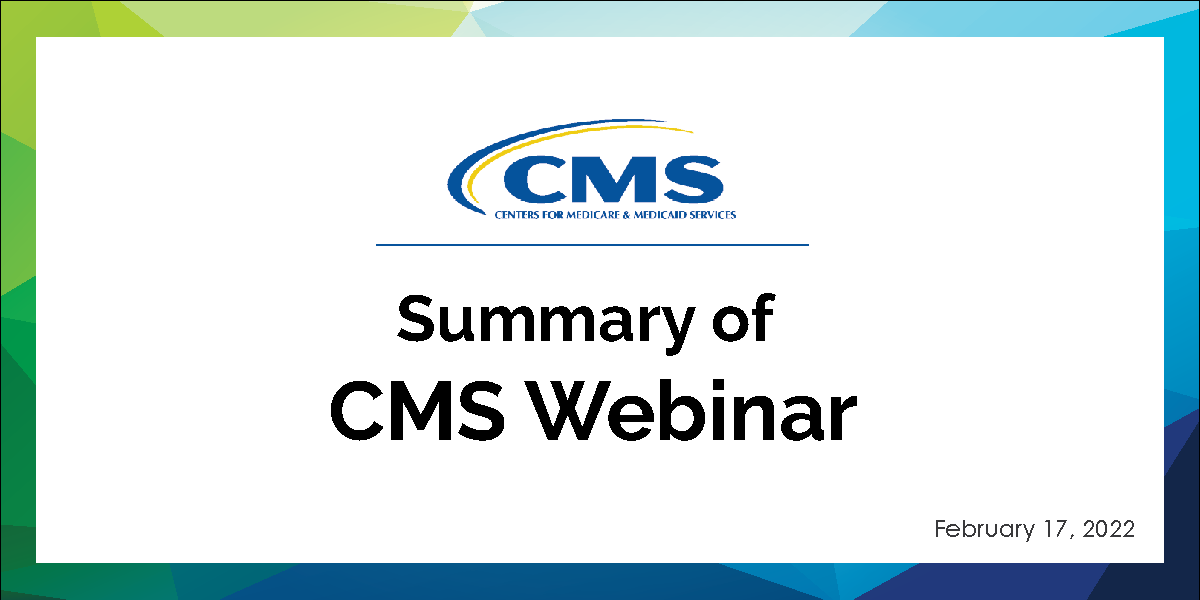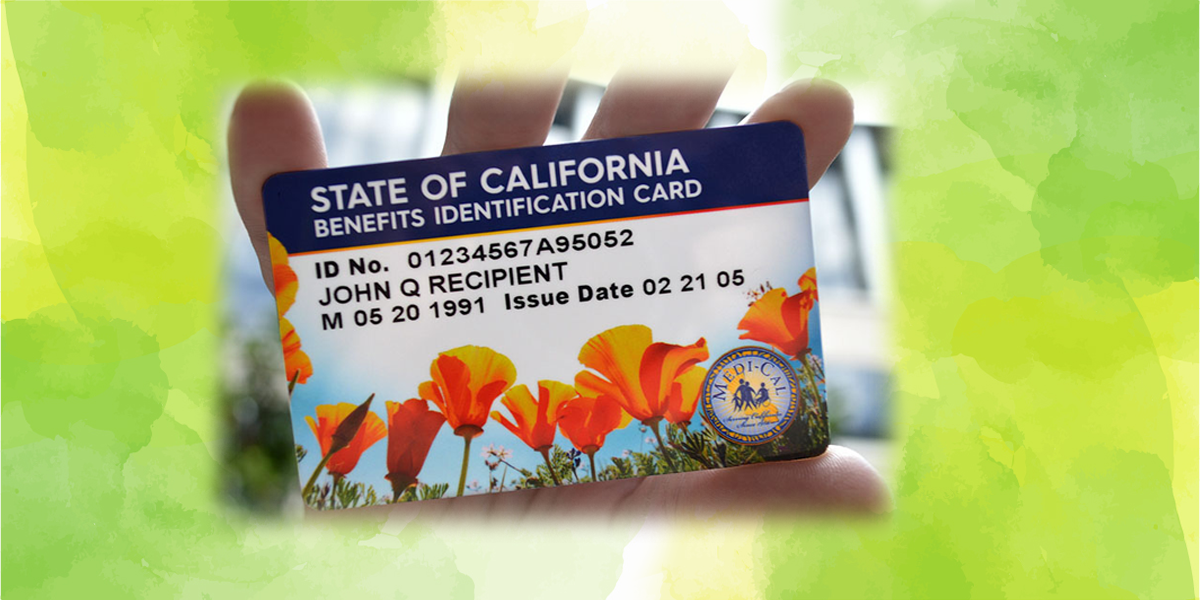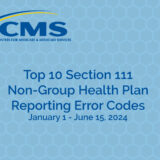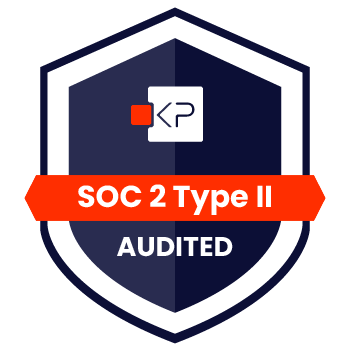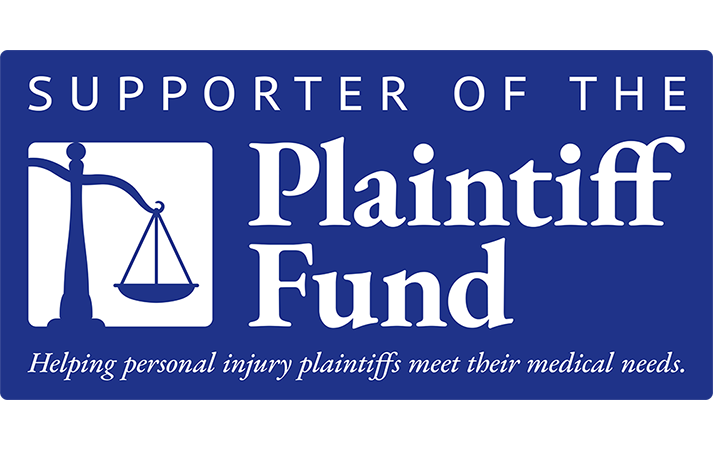The Centers for Medicare & Medicaid Services (CMS) released a revised Workers’ Compensation Medicare Set-Aside Arrangement (WCMSA) Reference Guide (“Reference Guide”) Version 3.9 on May 15, 2023. This Reference Guide replaces Version 3.8 which was released on November 14, 2022. There are a few notable changes when comparing the two Reference Guides.
To download the new WCMSA Reference Guide v3.9 Click Here.
CMS’s Version 3.9 Reference Guide
Section 1.1 includes the following changes:
-
- All WC letters currently signed with CMS’ Director of Financial Services Group name and signature image have been updated to reflect the current CMS customer service contact information (Appendix 5).
- The CMS Regional Offices are no longer responsible for approving initial determinations. Process language and contact information have been updated throughout the guide (Sections 9.0, 9.4.6, 9.5, and 18.0, and Appendix 5).
- Clarification has been provided regarding intrathecal pump, spinal cord stimulator, and peripheral nerve stimulator replacement frequency calculation (Section 9.4.5).
- The maximum time limit for eligibility has been removed from the Amended Review process (Section 16.3).
- The 94585 ZIP code has been added to the Walnut Creek Medical Center in the table listing major medical centers (Appendix 7).
- The CDC Life Table link was updated (Section 10.3)
Appendix 5: CMS Customer Service Contact Signature Image Updated to All WC Letters
All WC letters currently signed with CMS’ Director of Financial Services Group name and signature image have been updated to reflect the current CMS customer service contact information (Appendix 5). The following letters have been updated:
- Approval Letter
- Zero Set-Aside Letter
- Below Threshold Letter
- Beneficiary Below Threshold Letter
- Development Letter
- Closeout Letter
CMS Regional Offices No Longer Responsible for Approving Initial Determinations
The CMS Regional Offices are no longer responsible for approving initial determinations. Process language and contact information have been updated throughout the guide (Sections 9.0, 9.4.6, 9.5, and 18.0, and Appendix 5). Clarification has been provided regarding intrathecal pump, spinal cord stimulator, and peripheral nerve stimulator replacement frequency calculation (Section 9.4.5). The maximum time limit for eligibility has been removed from the Amended Review process (Section 16.3). The 94585 ZIP code has been added to the Walnut Creek Medical Center in the table listing major medical centers (Appendix 7). The CDC Life Table link was updated (Section 10.3).
9.0 Updates: Process Language and Contract Information
WCMSA Submission Process Overview
- 3.8 version: The WCRC applies the CMS’ criteria in reviewing proposals and forwards the proposals along with a recommendation on the appropriate funding amount to the assigned CMS Regional Office (RO) for a final determination.
- 3.9 version: The WCRC applies CMS’ criteria in reviewing proposals and making a determination, forwards the final determination on the appropriate funding amount to CMS.
9.5 Updates: Regional Office Receipt to Determinations
- 3.8 version: Regional Office Receipt
When the WCRC completes its review and recommendation, the case is sent to the RO assigned to the case based on the claimant’s state of residence and CMS’ state and region logic. Although the RO assignment is based on the state of residence of the beneficiary, a case may be transferred from one RO to another based on the case’s legal state of venue, or because the RO that the case was originally assigned to no longer processes WCMSA cases. When the RO receives the case, they review the WCRC recommendation and make a final determination in the case.
- 3.9 version: Determinations
*The update pertains to cases may not progress to approvals for a number of reasons, basically switches the responsibility from the Regional Office (RO) over to the Workers’ Compensation Review Contractor (WCRC).
New Language Added
-
-
- The WCRC may determine that the case should be closed. This can happen for a number of reasons, included: the parties are not longer settling, the case should be Black Lung instead of WC, the case is Liability rather than WC case, or the submitted has failed to submit necessary information after repeated development requests. The submitted is notified of the case closure for ineligible cases closed for insufficient information.
- When the WCRC completes its review and recommendation, CMS issues its determination in the form of an Approval letter to the submitter with copies sent to any eligible parties. Then the case is transferred to the Consolidated Regional Office to await receipt of the settlement documents so that the case may move to Final Determination/Case Completion.
9.6 Updates: From Final Determination to Case Completion
- 3.8 version: Final Determination
If the claimant is living, the case meets workload review threshold, any needed development has been received, and the case is not closed for other reasons, the RO reviews the WCRC’s recommendation and makes a determination as to the final CMS-approved WCMSA amount.
- 3.9 version: Case Completion
If the claimant is living, the case meets workload review thresholds, any needed development has been received, the case is not closed for other reasons, and the WCRC’s recommendations have been provided, then an approval letter is issued to the submitter with a determination as to the final CMS-approved WCMSA amount.
9.4.5 Clarifications: Medical Review Guidelines
Intrathecal Pumps
- 3.8 version: Permanent placement of IT pump devices are included every 7 years: the claimant’s life expectancy is divided by 7, decimals are dropped, and the whole number Is used for determining replacement over the life expectancy.
- 3.9 version: CMS policy assumes that a beneficiary would obtain the prescribed therapy within the first year following settlement if not already placed, or at the next routine interval for replacement. The routine replacement interval for IT pump devices is every seven years from the most recent placement date. If the IT pump is not already placed, one year is removed from the life expectancy before the replacement calculation occurs to account for that initial replacement. To calculate the number of replacements, the claimant’s life expectancy less the number of years from the most recent placement date is divided by seven, decimals are dropped, and the whole number is used for determining replacement over the life expectancy.
Examples:
-
-
-
- Beneficiary life expectancy is 21 years and no IT pump is yet placed. Take the 21 years, subtract one year for the initial placement, divide the remainder by seven, and use the whole number with that result.
- (21-1)/7 = 20/7 = 2.86
- One initial placement is needed, plus 2 replacements.
- Beneficiary life expectancy is 12 years and an IT pump was placed three years prior. Take the 12 years, subtract four years for the most recent placement, divide the remainder by seven, and use the whole number with that result.
- (12-4)/7 = 8/7 = 1.14 One replacement is needed.
Spinal Cord Stimulators
- 3.8 version: Permanent placements of SCS devices are included every 7 years for non-rechargeable and every 9 years for rechargeable: the claimant’s life expectancy is divided by the frequency of replacement of type, decimals are dropped, and the whole number is used for determining replacement over the life expectancy.
- 3.9 version: CMS policy assumes that a beneficiary would obtain the prescribed therapy within the first year following settlement if not already placed, or at the next routine interval for replacement. The routine replacement interval for SCS devices is every seven years for non-rechargeable and every nine years for rechargeable from the most recent placement date. If the SCS is not already place, one year is removed from the life expectance before replacement calculation occurs to account for that initial placement. To calculate the number of replacements, the claimant’s life expectancy less the number of years from the most recent placement date is divided by seven (or nice, depending on the unit type), decimals are dropped, and the whole number is used for determining replacement over the life expectancy.
Examples:
-
-
-
- Beneficiary life expectancy is 33 years and no SCS is yet placed, but a non-rechargeable unit is appropriate. Take the 33 years, subtract one year for the initial placement, divide the remainder by seven, and use the whole number with that result.
- (33-1)/7 = 32/7 = 4.57
- One initial placement is needed, and 4 replacements are needed.
- Beneficiary life expectancy is 17 years, subtract six years for the most recent placement, divide the remainder by seven, and use the whole number with that result.
- (17-6)/7 = 11/7 = 1.57
- One replacement is needed.
Pricing for Peripheral Nerve Stimulator (PNS) Surgery
(PNS) Surgery PNS surgery involves the placement of an electrode(s) in the direct vicinity of a specific peripheral nerve located outside the brain or spinal cord, thereby directly stimulating the painful peripheral nerve. CMS policy assumes that a beneficiary would obtain the prescribed therapy within the first year following settlement if not already placed, or at the next routine interval for replacement. The routine replacement interval for PNS devices is every seven years for non-rechargeable and every nine years for rechargeable from the most recent placement date. If the PNS is not already placed, one year is removed from the life expectancy before replacement calculation occurs to account for that initial placement. To calculate the number of replacements, the claimant’s life expectancy less the number of years from the most recent placement date is divided by seven (or nine, depending on unit type), decimals are dropped, and the whole number is used for determining replacement over the life expectancy. PNS replacement calculations are done the same as for SCS surgeries.
Examples:
-
-
-
- Beneficiary life expectancy is 27 years and no PNS is yet placed, but a non-rechargeable unit is appropriate. Take the 21 years, subtract one year for the initial placement, divide the remainder by seven, and use the whole number with that result.
- (27-1)/7 = 26/7 = 3.71
- One initial placement is needed, and three replacements are needed.
- Beneficiary life expectancy is 15 years and a rechargeable PNS was placed two years prior. Take the 15 years, subtract two years for the most recent placement, divide the remainder by seven, and use the whole number with that result. (15-2)/7 = 13/7 = 1.86
- One replacement is needed.
- Surgery pricing includes physician fees, facility fees, and anesthesia fees, if applicable.
- Physician fees: CPT codes are identified and priced based on the appropriate state fee schedule (or usual and customary charges from a state).
-
- 64555, Percutaneous implantation of neurostimulator electrode; peripheral nerve
- 64555, Percutaneous implantation of neurostimulator electrode array; peripheral nerve (excludes sacral nerve)
- 64590, Insertion or replacement of peripheral or gastric neurostimulator generator
- 01941, Anesthesia
- Facility fee: Generally, this procedure is handled in an outpatient setting. The appropriate APC should be included based upon surgery type.
-
- 5462, Stimulator Trial
- 5464, Stimulator Placement
- 5464, Stimulator Replacement Consider the number of leads to be used.
- Analysis Services: CPT 96972 can be billed every 30 days and more frequently in the first month. It should be priced four times in the first 30 days, monthly for the first year, and twice a year after the first year.
-
- 95972 – Electronic analysis of implanted neurostimulator pulse generator system (e.g., rate, pulse amplitude, pulse duration, configuration of wave form, battery status, electrode selectability, output modulation, cycling, impedance, and patient compliance measurements); complex spinal cord, or peripheral (i.e., peripheral nerve, sacral nerve, neuromuscular, except cranial nerve) neurostimulator pulse generator/transmitter, with intraoperative or subsequent programming.
- Anesthesia fee: The anesthesia fee is calculated by multiplying the time-value unit by a base value. The time-value unit is the reasonable time for a procedure. The base value is either established by the fee schedule, or by Medicare and conversion factors.
- Trials: If an associated trial takes place before the surgery, the trial is assumed to be successful and included with the cost of surgery. PNS is one time after trial, if successful. If a trial fails, a repeat trial is usually not appropriate unless there are extenuating circumstances that led to the trial failure (equipment malfunction, early lead migration, etc.), technological advances, or an alternative neuromodulary technique that may lead to a more successful second trial (see LCD L34328). If submitters give a detailed breakdown of their proposed surgery prices, the reviewer will consider the proposed amounts.
16.3 Updates: Amended Review
- 3.8 version: CMS has issued a conditional approval/approved amount at least 12 but no more that 72 months prior.
- 3.9 version: CMS has issued a conditional approval/approved amount at least 12 months prior.
For Additional Information
Medivest will continue to monitor changes occurring at CMS and will keep its readers up to date when such changes are announced. For questions, feel free to reach out to the Medivest representative in your area by clicking here or call us direct at 877.725.2467.



